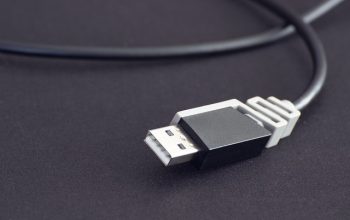Navigating the vehicle title transfer process can be a daunting task for new vehicle owners. This article demystifies the steps involved in transferring a car title, providing clarity on state-specific DMV requirements and associated fees and costs. Whether you’re a first-time buyer or an experienced car owner, understanding the intricacies of a title transfer is crucial for a seamless transition of vehicle ownership. We will guide you through the necessary paperwork, cost considerations, and potential pitfalls to ensure your title transfer is completed efficiently without incurring undue delays or penalties. By following our comprehensive checklist and step-by-step instructions, you’ll be well-equipped to handle the title transfer after car purchase with confidence.
- Understanding the Vehicle Title Transfer Process
- State-Specific DMV Title Transfer Requirements
- Comprehensive Checklist for a Smooth DMV Title Transfer
- Calculating Title Transfer Fees and Costs Across States
- Step-by-Step Guide: How to Transfer a Car Title Post-Purchase
- Navigating the Title Transfer After Car Purchase: Common Pitfalls to Avoid
- Tips for Efficient and Error-Free Vehicle Title Transfers
Understanding the Vehicle Title Transfer Process

Navigating the vehicle title transfer process is a critical step for new vehicle owners and can be a straightforward procedure with the right guidance. When purchasing a vehicle, whether it’s new or used, understanding the DMV title transfer requirements is essential. Each state’s Department of Motor Vehicles (DMV) has its own set of rules, forms, and fees associated with transferring a title. These requirements are designed to legally document the change in ownership and ensure that all vehicle records are up-to-date. To initiate the process, owners must complete the necessary application forms specific to their state, which typically involve submitting the previous title to the DMV along with proof of ownership, such as a bill of sale or purchase agreement.
Title transfer fees and costs are also state-specific and can vary significantly. They may include registration fees, titling fees, and potential handling or processing charges. It’s important for individuals to be aware of these costs in advance to budget accordingly and avoid any unexpected expenses. The fee structure is often outlined on the DMV’s official website or by contacting the local DMV office directly. By preparing a checklist that includes all the required documents, forms, and fees, car owners can streamline the title transfer process, ensuring compliance with state laws and avoiding delays or penalties. This proactive approach is particularly beneficial for those who are new to vehicle ownership or are unfamiliar with the specificities of their state’s DMV procedures. With careful planning and adherence to the guidelines provided by the DMV, transferring a car title after a purchase can be completed efficiently and effectively.
State-Specific DMV Title Transfer Requirements

Navigating the vehicle title transfer process can be a complex task for new car owners, as each state’s Department of Motor Vehicles (DMV) has its own set of requirements and procedures. Prospective title transferees must familiarize themselves with the DMV title transfer requirements specific to their region. These often include submitting the correct application forms, providing proof of ownership, and presenting a valid photo ID. Additionally, applicants are typically required to disclose any existing liens on the vehicle, complete an odometer disclosure statement for used cars, and pay the appropriate title transfer fees and costs. These fees can vary significantly from state to state, making it imperative for individuals to be aware of their jurisdiction’s exact financial obligations before initiating the process. To facilitate a smoother transfer, it is advisable to prepare all necessary documentation in advance. This includes gathering any required forms, ensuring payment of the title transfer fees and costs, and verifying that all legal prerequisites are met prior to visiting the DMV. By doing so, car owners can expedite the process, minimize potential delays, and avoid any penalties that might arise from non-compliance with state-specific regulations. A comprehensive checklist tailored to the DMV title transfer requirements of one’s home state is an invaluable resource for anyone looking to transfer a car title after purchasing a vehicle.
Comprehensive Checklist for a Smooth DMV Title Transfer

When embarking on the vehicle title transfer process, it’s crucial to have a comprehensive checklist to navigate the DMV title transfer requirements efficiently. This checklist serves as a roadmap, ensuring all necessary steps are taken and documentation is complete before submitting your application. To begin, gather the title transfer forms specific to your state’s Department of Motor Vehicles (DMV). These forms are often available online for immediate download and completion. Next, prepare the Bill of Sale or purchase agreement as proof of transaction. This document should include the vehicle identification number (VIN), sale date, and the parties involved in the transfer.
Title transfer fees and costs will vary depending on your state’s regulations, so be sure to research these amounts ahead of time to avoid any surprises. Some states may require a vehicle inspection or emissions test before the title can be transferred. Additionally, proof of insurance is typically mandatory to complete the process. You may need to provide your driver’s license and social security number for identification and residency verification. Lastly, if the transfer involves an out-of-state title, additional documentation such as an odometer statement might be necessary. By using a DMV title transfer checklist, you can ensure a smooth transition and adhere to all the requirements without oversight or delay. This proactive approach will help you transfer your car title after car purchase with ease and in accordance with the law.
Calculating Title Transfer Fees and Costs Across States

Navigating the vehicle title transfer process can be a multifaceted endeavor, as it involves adhering to specific state regulations. When purchasing a car, understanding the DMV title transfer requirements is crucial for a seamless transition of ownership. Title transfer fees and costs are subject to change based on the state in which the transfer takes place, and these variations can influence the overall expense. Each state’s Department of Motor Vehicles (DMV) dictates its own set of guidelines and associated charges, which may include filing fees, title fees, and possibly sales tax based on the purchase price. Prospective owners must research their state’s particular stipulations to calculate these costs accurately. For instance, some states may waive certain taxes for vehicles deemed antique or classic. To ensure compliance and avoid any potential penalties or delays, it is imperative to consult the DMV title transfer requirements specific to your state of residence. Utilizing a comprehensive DMV title transfer checklist can streamline the process by serving as a handy reference for all necessary documents and steps, including the accurate calculation of title transfer fees and costs associated with your vehicle purchase. This proactive approach not only safeguards against legal repercussions but also expedites the transfer of car titles, allowing you to legally register and operate your new vehicle without undue delay.
Step-by-Step Guide: How to Transfer a Car Title Post-Purchase

When purchasing a vehicle, one of the critical post-purchase steps is understanding and completing the vehicle title transfer process. This ensures that the ownership is legally transferred from the seller to the buyer. The first step in this process is to notify the DMV of your state about the change of vehicle ownership. This can typically be done by submitting a completed application for title transfer, which is usually available on the DMV’s official website or at their local office. Ensure you have all necessary paperwork, including the current title, if possible, proof of insurance, a bill of sale, and any applicable identification. The application must be filled out accurately to avoid delays.
Next, you’ll need to pay the DMV title transfer requirements, which include the appropriate fees and costs as mandated by your state. These can vary significantly from one region to another, so it’s important to check your local DMV’s fee schedule beforehand. Alongside these fees, you may also be subject to additional taxes, registration fees, or documentation charges. To facilitate a smoother transfer and avoid any penalties, it’s advisable to gather all the required documents and payments beforehand. Once all forms are completed and fees are paid, the DMV will process your application, and you will receive the updated title in your name. Keeping a DMV title transfer checklist handy can help streamline this process, making sure no steps are missed and that the transition to your new vehicle ownership is both legal and efficient.
Navigating the Title Transfer After Car Purchase: Common Pitfalls to Avoid

When purchasing a vehicle, understanding the vehicle title transfer process is crucial to ensure a seamless transition of ownership. One of the most common pitfalls buyers encounter is failing to promptly notify the DMV of the change in ownership. Delays in submitting the necessary paperwork can lead to penalties or complications with registration. To avoid such issues, it’s imperative to gather all required documents as soon as the sale is finalized. These typically include the completed title transfer form, proof of vehicle purchase price (such as a bill of sale), odometer disclosure statement, and identification. Each state’s DMV has its own set of requirements for the DMV title transfer process, so it’s essential to research these ahead of time.
Title transfer fees and costs can vary significantly from one jurisdiction to another, so potential buyers should be prepared by checking the specific DMV title transfer requirements for their state beforehand. Additionally, neglecting to properly fill out forms or submitting them to the wrong office can cause unnecessary delays. To expedite the process, consider using a DMV title transfer checklist as a reference throughout your transaction. This tool can help ensure all steps are completed in order and that no important details are overlooked. By being well-informed and organized, the title transfer after car purchase can be executed efficiently, allowing you to legally drive your new vehicle without undue interruptions or complications.
Tips for Efficient and Error-Free Vehicle Title Transfers

To navigate the vehicle title transfer process efficiently and error-free, it’s crucial to familiarize yourself with the specific DMV title transfer requirements for your state. Each state has its own set of guidelines and forms that must be completed accurately to avoid any holdups. Start by gathering all necessary documents ahead of time, which commonly include the current title or registration, proof of ownership, identification, and liability insurance. Ensure that all personal details are up-to-date and correctly filled out on these documents to prevent delays due to clerical errors.
Once you have all your paperwork in order, determine the title transfer fees and costs associated with your transaction. These can vary significantly between states, so it’s important to check with your local DMV for specific amounts. To expedite the process, consider submitting your application online if available, or via a local service center. Additionally, be aware of any additional requirements, such as an odometer disclosure statement for used vehicles or emission inspections, and complete them beforehand. By thoroughly preparing all documentation and understanding the associated fees, you can ensure a streamlined vehicle title transfer after car purchase, thereby saving time and adhering to legal obligations without incurring unnecessary penalties. Utilize a DMV title transfer checklist as a reference throughout the process to stay on track with each step required.
Navigating the vehicle title transfer process can be a complex endeavor for new vehicle owners. However, with the right guidance and resources, this necessary administrative task becomes more manageable. This article has demystified the DMV title transfer requirements varying by state, ensuring that car buyers are well-equipped to handle the transfer efficiently. By understanding the fees and costs involved and utilizing a comprehensive checklist, individuals can streamline the process and avoid common pitfalls, saving both time and money. The provided step-by-step guide and tips for an efficient transfer serve as valuable assets for anyone looking to transfer a car title post-purchase. In conclusion, a clear grasp of the vehicle title transfer process, along with adherence to state-specific DMV requirements, empowers vehicle owners to successfully complete title transfers and maintain compliance with legal standards.



